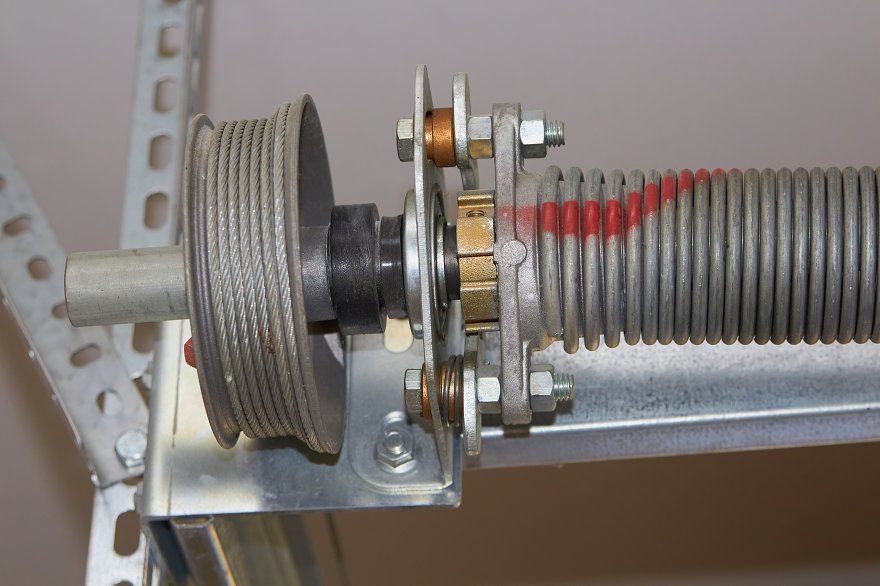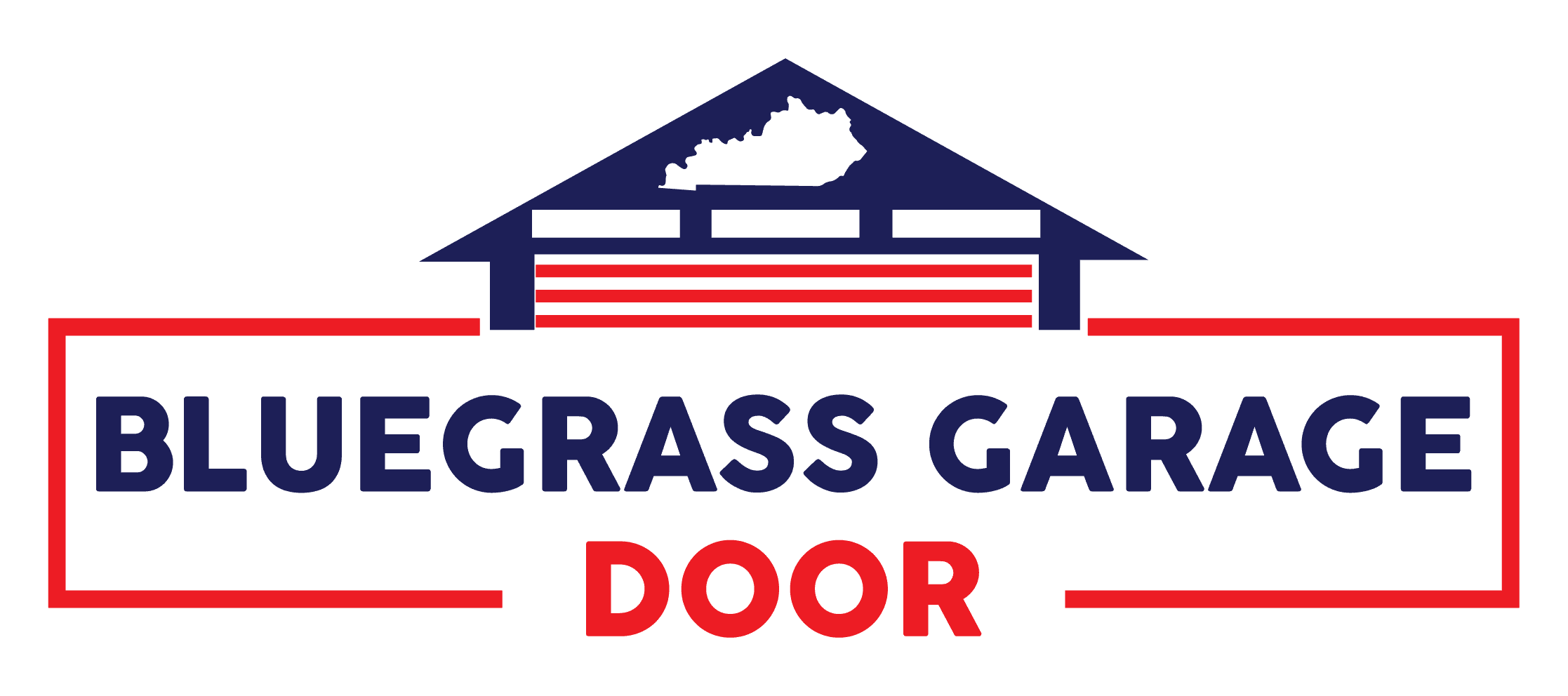Garage door springs are an essential component of a functioning garage door system. They serve as the backbone, supporting the heavy garage door’s weight and enabling smooth opening and closing. In this comprehensive guide, we’ll explore the different types of garage door springs, their functions, how they work, and signs of wear and tear. We’ll also cover safety precautions, DIY repair tips, and when to call a professional. By understanding how garage door springs function, you’ll be better equipped to maintain your garage door system for years.
Garage door springs play a vital role in the smooth operation of your garage door system. These high-tension springs counterbalance the door’s weight, making it easier to open and close. They ensure that the door operates smoothly, efficiently, and safely. Your door can become unbalanced and potentially dangerous without properly functioning garage door springs.
What is Garage Door Springs?

Garage door springs are essential components of a garage door system that play a crucial role in its operation. They are responsible for counterbalancing the heavy weight of the garage door, making it easier to open and close. Garage door springs store energy when the door is closed and release that energy to lift it when it’s opened. There are two main types of garage door springs: torsion springs and extension springs.
Main Types of Garage Door Springs
There are two primary types of garage door springs: torsion springs and extension springs. Each type has its own benefits and drawbacks, and it’s crucial to understand the differences to select the right spring for your garage door system.
Torsion Springs
Torsion springs are mounted horizontally above the garage door, usually on a metal shaft. They use torque to balance the door’s weight and consist of a tightly wound coil. As the door closes, the spring winds up and stores energy. When the door opens, the stored energy helps lift the door.
Advantages of torsion springs:
- Greater weight capacity
- Longer lifespan (15,000 to 20,000 cycles)
- Quieter and smoother operation
- More balanced weight distribution
Extension Springs
Extension springs are on either side of the garage door and parallel to the horizontal tracks. These springs stretch and contract as the door opens and closes, using the stored energy to assist with the door’s movement.
Advantages of extension springs:
- Lower cost
- Easier installation process
- Suitable for lighter garage doors
How Garage Door Springs Work
Garage door springs work on counterbalancing the garage door’s weight. Using torque or tension, they help support the door’s weight and make it easier to open and close. When the door is closed, the springs store energy; when the door opens, the springs release that energy to lift the door. This counterbalance system allows the garage door opener to work efficiently, with less strain on the motor.
How to Identify Signs of Damage in Your Garage Door Springs
It’s essential to regularly inspect your garage door springs to identify any signs of damage or wear and tear. Catching issues early on can prevent more severe problems and potential safety hazards. Here are some common signs that your garage door springs may be damaged or need repair:
- Difficulty opening or closing the door
If your garage door becomes challenging to open or close or feels much heavier than usual, it could be due to a problem with the springs.
- A visibly sagging door
When the garage door is half-open, it should remain level. If one side of the door sags or the entire door looks uneven, it may indicate an issue with the springs.
- Unusual noises during the operation
When you hear loud or unusual noises, such as snapping, grinding, or squeaking, it could indicate worn or damaged springs when opening or closing your garage door.
- Uneven or jerky door movement
Garage doors should open and close smoothly. If the door moves unevenly or jerks while in operation, it could indicate a problem with the springs or that they are out of balance.
- A snapped or visibly damaged spring
Inspect your garage door springs for any visible signs of damage, such as a broken spring, rust, or excessive wear. A snapped spring may cause the door to drop suddenly or become inoperable.
- Gaps in the torsion springs
For torsion springs, you may notice a gap or separation between the coils, indicating that the spring has lost its tension and may require replacement.
- Excessive stretching of extension springs
If you notice that your extension springs are stretched out unevenly or appear much longer than usual when the door is closed, it’s a sign that they may have lost their tension and need to be replaced.
If you identify any of these signs, it’s essential to address the issue promptly. In many cases, it’s best to call a garage door technician to safely and correctly repair or replace the damaged springs, as working with high-tension springs can be dangerous.
Safety Precautions
Garage door springs are under immense tension, and working with them can be dangerous. If you’re attempting any maintenance or repair work, be sure to:
- Unplug the garage door opener
- Disengage the garage door from the opener by pulling the emergency release cord
- Wear protective eyewear and gloves
- Use the appropriate tools for the job
- Work with a partner to ensure the safety
How to Replace and Maintain Your Garage Door Springs
Replacing and maintaining garage door springs can prolong their lifespan and ensure your garage door system’s smooth and safe operation. While homeowners, replacing garage door springs can perform some maintenance tasks can be dangerous due to the high tension involved. If you need to be more experienced or confident in your abilities, it’s best to call a professional. However, if you choose to proceed, follow these general guidelines:
Replacing Garage Door Springs
- Gather the necessary tools: You’ll need a winding bar, wrenches, sockets, a ladder, and safety equipment such as gloves and protective eyewear.
- Unplug the garage door opener and disengage the door from the opener by pulling the emergency release cord.
- Secure the garage door using a clamp or locking pliers on the track below the bottom roller.
- For torsion springs, measure the current spring’s length, wire size, and inside diameter to ensure you purchase the correct replacement spring. For extension springs, measure the length of the stretched spring and note the door’s weight.
- Carefully release the tension in the existing springs. For torsion springs, use winding bars to unwind the springs, and for extension springs, carefully remove the safety cables and then the springs from the brackets and track.
- Remove the outdated springs and fix the fresh ones while adhering to the manufacturer’s guidelines for accurate installation.
- Reapply tension to the new springs. For torsion springs, use winding bars to wind the springs, and for extension springs, reconnect them to the brackets and track, ensuring they’re properly seated.
- Reattach any safety cables and double-check all hardware, ensuring everything is tight and secure.
- Reconnect the garage door to the opener and test its operation to ensure it opens and closes smoothly and safely.
Maintaining Garage Door Springs
- Regular inspection: Inspect your garage door springs for signs of wear, damage, or rust. Check for gaps in torsion springs and excessive stretching in extension springs.
- Lubrication: Use a silicone-based lubricant to lubricate the springs regularly, reducing friction and preventing rust.
- Check Balance: Test the balance of your garage door by disengaging it from the opener and manually lifting it halfway. If the door remains level and in place, the springs are balanced. If not, consider calling a professional to adjust them.
- Tighten hardware: Inspect and tighten any loose hardware, such as mounting brackets, bolts, and screws, to ensure your garage door system remains stable.
Remember, safety should always come first. If you need clarification on any aspect of maintaining or replacing your garage door springs, contact a professional garage door technician for assistance.
When to Call a Professional
While homeowners can perform minor maintenance tasks, there are instances when it’s best to call a professional for garage door spring repairs or replacement. Reach out to a garage door specialist if:
- The springs are visibly damaged, broken, or rusted
- The door is not opening or closing properly, even after routine maintenance
- You’re unsure about how to perform repairs or replacements safely
- You don’t have the necessary tools or skills to complete the job
Understanding garage door springs’ crucial role in your garage door system is essential for proper maintenance and operation. By recognizing the differences between torsion and extension springs, identifying signs of wear and tear, and knowing when to call a professional, you’ll be better equipped to keep your garage door in top shape. Remember that safety should always come first; contact a garage door specialist if you need clarification on any maintenance or repair tasks.
OUR SERVICES GO BEYOND BROKEN GARAGE DOORS SPRINGS
At Bluegrass Garage Doors, we take pride in delivering exceptional products and services to our valued customers in Louisville, KY, and nearby communities. We supply garage doors, provide garage door repair and maintenance, and offer entrance doors in various sizes and colors. We carry trusted brands such as Clopay and LiftMaster and give you the opportunity to personalize your new garage door with an extensive selection of styles and colors.
Our skilled technicians are available for repair and maintenance services in the Mount Washington, KY, region, where they will cater to all your garage door requirements. No matter the size of the project, rely on Bluegrass Garage Doors for exceptional results.
We’re always here to assist if you have concerns about your garage door’s functionality or think there might be a broken spring. Handling such tasks can be hazardous if not carried out by a trained expert. Allow us to alleviate your stress – get in touch with us today!
